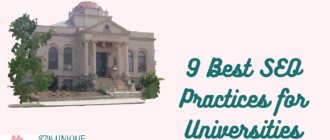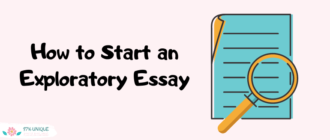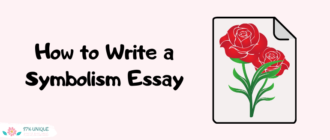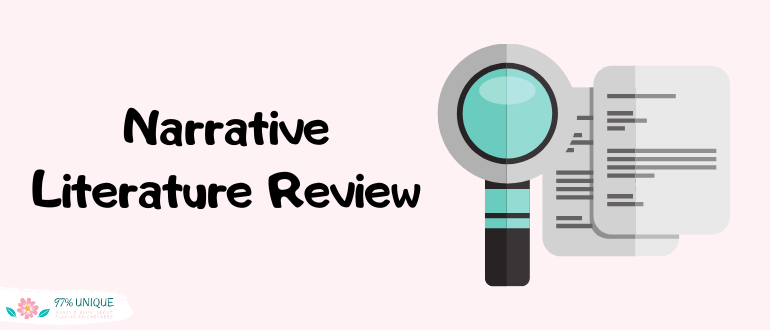
Over the course of many years of teaching, I’ve found that both my students and I struggle with our course unit on research writing. It’s boring, it’s difficult, and we all undoubtedly become aggravated with each other throughout the process.
If you’ve ever experienced a lesson burnout, like I have so many times, you know how frustrating it can be for both teacher and students. Unless you’ve written tons of research papers in your lifetime, they can seem like a daunting task. This is especially true for middle school and high school students who are likely just learning how to do so.
If your students are embarking on a research project, one of their first steps in the research process will be completing a comprehensive narrative literature review.
Ironically, I’ve had to do my own narrative literature review of sorts to bring you the resources you’ll find herein. Of note, after you’ve made it to the end of this post, you’ll be able to effectively guide your students in composing a narrative literature review by focusing on these basic tenets:
- What is a narrative literature review?
- Systematic vs. Narrative literature reviews.
- The different types of narrative literature reviews.
- Steps in writing a narrative literature review.
Defining, Differentiating, and Composing a Narrative Literature Review
What is a narrative literature review?
Essentially, it is a step in the research process that follows selecting a topic and asking a research question. Before developing an engaging thesis, a researcher has to ascertain that scholarly literature exists in support of their proposed thesis.

For students who have grown up with the ability to simply Google a wealth of information and receive desired results in a moment’s time, vetting sources may seem like a foreign concept. Teaching your students how to write this type of work will teach them how to scrutinize sources.
But what is a narrative literature review? According to top researchers, “A literature review is a type of research article published in a professional peer-reviewed journal.” These articles are published in vetted, scholarly journals that you and your students can trust as fact.
In essence, your students select a research topic then hit the databases in search of reputable, trustworthy journal articles that answer their research query and support their anticipated position on that topic. By reviewing the existing literature on the selected topic, students can be sure there is proven data and a body of existing knowledge that supports their thesis.
According to J.D. Baker, a professor at Charles Sturt University, acquiring current and relevant literature on a given topic is, “…an essential part of the research process [that] help[s] to establish a theoretical framework and focus or context for your research.”
For this reason, the narrative literature review may very well be one of the most important steps in the research process.
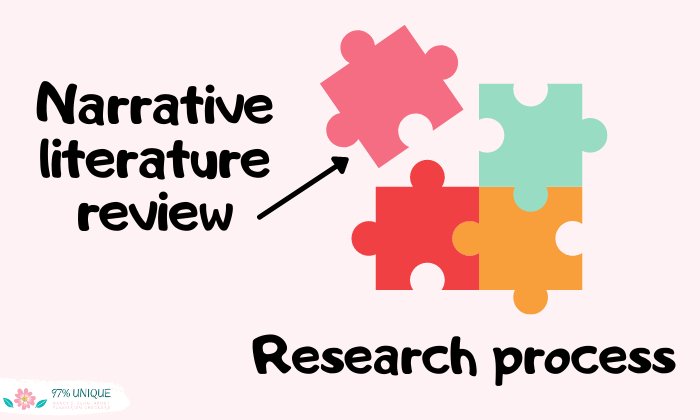
As one of the first few steps in the research process, a step that is likely a foreign task to your students, it’s imperative that the process is broken down into simplified, manageable tasks.
Rebecca Alber, blogger for Edutopia, discusses the importance of scaffolding projects for students. She expounds upon the pedagogy of breaking projects into manageable chunks and “providing concrete structure for each.”
By reading through and analyzing the body of knowledge on a given topic, researchers, like your students, can focus and justify their research. As discussed here, the thesis is the most important part of a research paper, but you can’t arrive at your thesis without a thorough narrative literature review.
In this video, research specialist, Sarah Bronson, explains what a narrative literature review does, how to plan it, and how to write a cohesive and proper review.
She provides tips for defining your purpose, audience, and scope as well as examples of a variety of narrative literature reviews.
Systematic vs. Narrative Literature Reviews: Knowing the Difference
In short, the difference between a narrative literature review and a systematic literature review has to do with the search terms used and the methodology employed when searching databases.
According to those in the know, “A narrative literature review is fairly broad, as it involves gathering, critiquing and summarizing journal articles and textbooks about a particular topic.” In other words, you enter general search terms into a search engine and sift through the yielded articles.
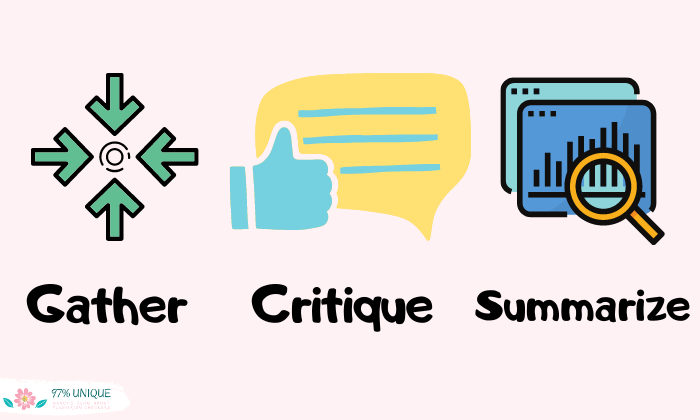
Essentially, a narrative literature review summarizes and synthesizes the body of work on a topic. The review may be generally focused on a broad topic or a specific research question.
A systematic literature review, on the other hand, “tend[s] to use specific search terms and inclusion/exclusion criteria, whereas the criteria for narrative reviews may not be as strict.” This type of work is best employed by writers who have already focused their query and/or thesis. By including or excluding particular terms, a more pointed search return is gleaned.
In essence, the goal of a systematic literature review is to answer a focused objective question. To be clear, in this type of work, the researcher is working with a clearly defined question.
Check out this helpful video that further explicates the point and process of a systematic literature review. Cochrane provides insight into why, in some instances, a systematic review is more useful than its narrative counterpart.
Though both systematic and narrative literature reviews can be useful in producing desired and relevant research documents, knowing which method to use depends on your experience and how far into the research process you’ve gone.
If you are beginning preliminary research, you’ll likely only be able to perform a narrative literature review. You may have a general topic that you’d like to investigate before committing to a topic and a thesis.
However, if you’ve already focused your study and have a better grip on the direction you wish to go, then you may find the systematic review to be useful.
Again, the literature review is just one step in a series of interrelated steps that help students write a focused and cohesive research paper. In this article, you can take a look at later steps in the writing process.
Narrative Literature Reviews: Four Unique Approaches
According to Onwuegbuzie and Frels, there are four common types of narrative literature reviews. Essentially, literature reviews can be broken down into these four categories: general, methodological, theoretical, and historical. Let’s take a look at how they differ from one another.

A general literature review takes a close look at the most important and most current knowledge on a given topic. This type of work will form the basis for your thesis or dissertation; it’s what you’ll do before focusing your query.
Sources cited in a general literature review may include scholarly articles, governmental data, books, interviews, and websites. The general literature includes a summary and assessment of the literature.
A methodological literature review defines the methodology used to apprehend the literature. In other words, this type of paper outlines and explains research methods and parameters.

The methodological literature review analyzes how information was arrived at not necessarily what the literature asserts.
A theoretical literature review analyzes how theories inform research practices. Basically, this type of paper identifies pre-existing theories, the connection between and among them, how well scrutinized the theories are, and the development of new possible theories.
Finally, a historical literature review focuses on the emergence, development, and historical context of a research topic as it presents in a body of knowledge. To be clear, this type of literature review traces the history of a particular issue or theory and how it has evolved since its onset.
In this excellent resource featuring Leigh Hall of teachingacademia.com, Hall further explains the different types of narrative literature reviews. Hall explains the four types of reviews in further detail to help writers determine which is best suited for their research purposes.
Teachers should be clear about their expectations of students concerning which type of narrative literature review is expected of them. A closer look at which type of review is best suited to your students’ projects can help you, the teacher, in guiding your students.
As one of the most important steps in the research process, it’s imperative students can successfully complete a literature review before moving on in the research process.
Lisa L. Munro, Phd., a blogger who examines the importance of creating writing communities among our students, asserts the importance of, “writing a concise literature review just comprehensive enough for the purpose of an academic journal article.”
Narrative Literature Review: A Writer’s Checklist
The writing process is a step-by-step undertaking and some steps are more of a process than others. That’s especially true of composing a narrative literature review.

Essentially, a narrative literature review is a project in and of itself. A proper review adheres to the following steps.
Title
Entitle your review as a “review of…” Titling your work this way lets your reader know exactly what you’re setting out to do in the subsequent paragraphs. However, as a researcher, doing so helps you keep your sources organized and makes it easy to refer back to that source.
Abstract
Write a brief summary of the article and how it applies to your course of study. This step is where you synthesize the information gleaned from a particular source. It will provide you, the researcher, with an opportunity to decide if it’s useful information that will support your research query.
Your abstract should include a sentence about how the source applies to your own research, your purported thesis, a summary of the literature, and conclusions you’ve made based on your findings.
Introduction
The writer provides his/her rationale and objectives for the literature review. Your introduction should establish your topic of study and an explanation of why your research is important.
Methods
Describe the methods used in performing the research. Essentially this is a few sentences explaining the steps and mediums used to acquire your sources. This indicates whether or not your research comes from reputable sources.

Here is where you explain if you used computer databases along with the search terms you employed, scoured physical files at a given office building, read physical texts on a given topic, etc.
Discussion/Summary
The writer discusses his/her discoveries as well as an overall summary of the information. Without repeating what you’ve written in the other parts of your review, in the discussion, you summarize your main findings, interpret those findings, identify the strengths and weaknesses of the given source, compare your findings with other literature on the topic, explain how and if your findings answer your research query, and assert if your thesis is supported by the literature.
In this helpful tutorial, David Taylor, an online writing professor, walks you through the formatting of a literature review. He walks writers through the five-step process of completing a paper in less than 30 minutes.
As in writing any type of composition, students should be reminded to carefully proofread for clarity and correctness. I always suggest that students read their compositions aloud as readers will often hear mistakes before they see them.
A final consideration that students inevitably need to be reminded of is avoiding plagiarism. I find it’s helpful to define plagiarism for students so there’s no question about why copying another’s ideas is problematic.
There are many online plagiarism checkers for teachers and students to use to ensure work is entirely authentic. Check out this article for some tips and tricks for avoiding and identifying plagiarism.
Useful Resources
- What is a research paper?
- How to format a research paper
- 113 great research paper topics
- Writing an educational research paper: research paper sections
Conclusion
One of the most arduous tasks in a research project is gathering the right sources for your purpose. Help students understand how to search in the right places for articles and how to evaluate sources.
One of the questions my students rightfully ask is why they can’t use news media websites. News networks like CNN deliver the facts, don’t they? This article may help you and them to better recognize and evaluate credible source material.
A thorough narrative literature review will get your students off on the right foot. Everything after the literature review falls into place more readily when you have the right sources for your purpose.


